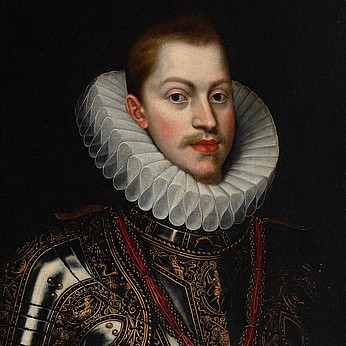Novo-Hispanic school; second half of the XVII century. "Santa Rosa de Lima with the Infant Jesus". Oil on canvas. It preserves its original canvas.
Lot 81
About Seller
Setdart Auction House
Carrer Aragó 346
Barcelona
Spain
Setdart Subastas was born in 2004 and is currently the first online art auction in Spain with solidity, prestige and reliability guaranteed by our more than 60,000 users. Setdart has a young, dynamic and enterprising team ready to successfully manage the purchase and sale of art works through custom...Read more
Estimate:
EUR€7,000 - EUR€9,000
$7,526.88 - $9,677.42
Absentee vs Live bid
Two ways to bid:
- Leave a max absentee bid and the platform will bid on your behalf up to your maximum bid during the live auction.
- Bid live during the auction and your bids will be submitted real-time to the auctioneer.
Bid Increments
| Price | Bid Increment |
|---|---|
| EUR€0 | EUR€10 |
| EUR€200 | EUR€25 |
| EUR€500 | EUR€50 |
| EUR€1,000 | EUR€100 |
| EUR€3,000 | EUR€200 |
| EUR€5,000 | EUR€500 |
| EUR€10,000 | EUR€1,000 |
| EUR€20,000 | EUR€2,000 |
| EUR€50,000 | EUR€5,000 |
About Auction
By Setdart Auction House
Nov 24, 2021
Set Reminder
2021-11-24 09:00:00
2021-11-24 09:00:00
America/New_York
Bidsquare
Bidsquare : Old Masters, Day 1
https://www.bidsquare.com/auctions/setdart-auction-house/old-masters-day-1-7873
Setdart Auction House sofia@setdart.com
Setdart Auction House sofia@setdart.com
- Lot Description
Novo-Hispanic school; second half of the XVII century. "Santa Rosa de Lima with the Infant Jesus". Oil on canvas. It preserves its original canvas. It has visible perforations, covered with patches on the back. Needs restoration. Measurements: 180 x 113 cm; 170 x 103,5 cm (frame). The figure of Saint Rose of Lima is placed in a monumental architectural vein. Configured in a sculptural way, the woman is placed in the center of the composition, dressed in religious clothing and holding the Child Jesus with her right arm. The Child is crowned by a garland of flowers and in her hand she holds another floral crown whose recipient seems to be the saint. The presence of flowers extends throughout the work, as floral groups make up the corners of the canvas, and the saint also holds a delicate flower in her left hand. It is worth noting the artist's great interest in the qualities and detail used in a realistic reproduction of the flowers, and another remarkable feature is the sweetness with which the faces of the protagonists have been treated, which stand out against the rougher elements of the drawing, such as the saint's hand. Isabel de Flores Oliva (Lima, 1586-1617), better known as Saint Rose of Lima, was a Peruvian saint, a Dominican mystic canonized in 1671. She is the first saint of America, patron saint of Lima and Peru since 1669 and of the New World and the Philippines since 1670. In 1615 the Dutch corsairs decided to attack the city of Lima, and the news soon spread among the population. In response, Rosa gathered the women of Lima in the church to pray for the salvation of Lima. The saint went up to the altar, and cutting off her clothes and rolling up her sleeves, she put her body to defend Christ in the Tabernacle. Mysteriously, the captain of the Dutch fleet died on his ship a few days later, which led to the withdrawal of the ships. In Lima everyone attributed the miracle to Rosa, and for that reason she is usually represented in front of the sea, praying to God for protection against the corsairs. It is worth mentioning that, during the Spanish colonial domination, a mainly religious painting was developed, destined to Christianize the indigenous peoples. The local painters had as a model the Spanish works, which they followed in a literal way in terms of types and iconography, an iconography that was varying in a way that Christianization was imposed. This fact was largely due to the absorption of relevant figures of the culture as part of the Christian tradition, and to the adhesion of a new saints' calendar linked to local facts and customs. The most frequent models were the harquebusier angels and the triangular virgins, however, in the first years of the 19th century, already in times of independence and political opening of some of the colonies, several artists began to represent a new model of painting with its own identity.
- Shipping Info
-
In-house shipping available. Please inquire at admin@setdart.com.
-
- Buyer's Premium



 EUR
EUR CAD
CAD AUD
AUD GBP
GBP MXN
MXN HKD
HKD CNY
CNY MYR
MYR SEK
SEK SGD
SGD CHF
CHF THB
THB

















